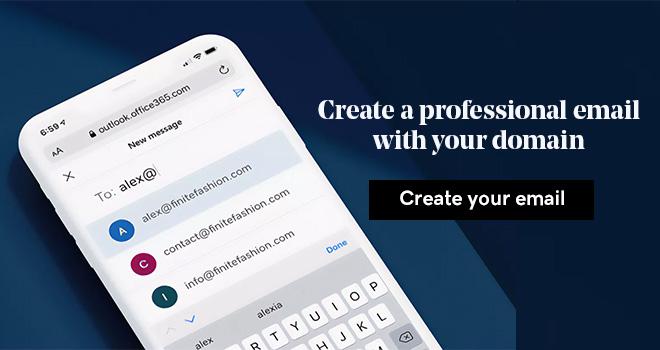Email marketing may be one of the oldest forms of digital marketing, but it continues to be one of the most effective tools for businesses. It's a tried and true method that can help you reach your target audience and grow your business. But how can you make sure you're using this marketing channel correctly?
This guide is your one-stop shop to get up to speed on email marketing in 2023. We'll cover the basics of what it is and how it works, as well as a step-by-step guide on how to create a successful email marketing campaign. We'll also discuss the best strategies to use so that you can stay ahead of the curve.
So whether you're a new marketer just starting out in the digital world or an experienced business owner looking to expand your reach, this guide has what you need!
What is email marketing?
Email marketing is a digital marketing strategy that involves the use of emails to promote products, services, and other relevant information about your business. It’s an effective way to keep in touch with customers or prospects, build relationships, and drive sales.
By utilizing email campaigns, you can reach people directly without requiring them to visit your website—which can be a great way to grow your brand.
Email campaigns can also act as reminders or notifications and help you maintain relationships with customers. With email marketing, you can measure the effectiveness of your campaigns and better understand what works best for your audience.
Editor's note: Ready to get an email address that perfectly matches your business? Sign up for GoDaddy's Professional Email today!

Types of Email Marketing campaigns
There are several types of email marketing campaigns that can be used to reach customers and increase engagement. These emails generally fall under a few categories: informational, promotional, and transactional. Each is able to serve prospects and customers in different ways depending on where they are in the buyer’s journey.
Let's discuss several types of email campaigns and what they are used for.
Newsletter campaigns
Newsletter campaigns are traditionally one of the most common types of email marketing campaigns. They are used to inform customers or prospects about your company’s news, products, or services. Email newsletters are often sent out on a weekly, monthly, or quarterly basis and include information such as new releases, industry news, upcoming events, or other relevant content.
Newsletters can be used to keep customers updated with information on your company while also building a relationship with them. They are an effective way to engage customers and keep them interested in what you have to offer.
Having said that, newsletters are not always the best choice depending on what you want to achieve. Newsletters are sent out to a large number of people, so they don't allow for any personalization. Because of their general nature, they are not always as effective in terms of conversion rate as other types of email campaigns.
Promotional emails
Promotional emails are sent out to customers and prospects in order to promote a product or service. This could be anything from a discount code or coupon, to announcing a new product launch. Promotional emails are meant to inform customers of your offerings and encourage them to take advantage of what you have to offer.
Promotional emails can also be used to build relationships with customers. By sending out content that is relevant to their interests, you can start building trust and credibility with them. This is an effective way to get them interested in what you have to offer and make them more likely to purchase from your business.
When it comes to promotional emails, timing is key. You don't want to send out too many promotional emails or they may seem spammy. Instead, try to find the sweet spot when customers are likely to be interested in what you have to offer without feeling overwhelmed by too many messages.
Transactional emails
Transactional emails are sent out when a customer interacts with your business or online store in some way. These emails contain information such as purchase confirmations and shipping updates. They also include details like order numbers, estimated delivery dates, and more.
Transactional emails are an important part of the customer experience. By providing customers with timely updates about their orders, you make them feel informed and taken care of.
This helps to build customer loyalty and increases the chance that they will come back for more.
While transactional emails are a necessary part of the customer experience, they typically don't include marketing content. This is because it can come across as spammy to customers who have just given money to your business.
There may also be legal considerations when sending transactional emails depending on the country. In the United States, for instance, there are guidelines to determine whether or not an email is transactional or otherwise. According to Customer.io, it's recommended that the subject line and bulk of the transactional content appear at the beginning of the email.
Rather than risk appearing pushy, or worse, it may be better to rely on promotional emails to promote your products.
Welcome emails
Welcome emails are typically the first email sent out to new customers who have recently signed up for your business. This email is meant to thank them for joining and provide them with helpful information about your business.
Not only do welcome emails help introduce new customers to your brand, but they can also be used as an effective marketing tool. By including relevant content such as discount offers and product recommendations, you can increase the chances of conversion.
A powerful welcome strategy for products or services that require setup is to include a series of emails that guide customers through the setup or onboarding process. This helps keep them engaged with your product and makes sure they don't get lost in the process.
You may also want to include links to helpful resources, such as a tutorial video or product guide, and links to contact customer service in case they have any questions.
Overall, welcome emails are an important part of the customer experience and can be a great way to build relationships with new customers.
Automated campaigns
Automated email marketing campaigns are an effective way to keep in touch with customers and send them information that is relevant to them. These are sent out automatically based on an action taken by a customer. These emails can be triggered when someone signs up for your email list, makes a purchase, or interacts with one of your content pieces.
Email automation can also be used to send customized messages to customers based on their interests and past interactions with you. For example, you can set up automated emails that thank customers for their purchase or inform them about upcoming promotions. You can also send them links to products that are similar to what they have already purchased.
Abandoned cart emails
Abandoned cart emails are another type of email marketing automation used by businesses with online checkout. These emails remind customers who have added items to their online shopping carts but have not completed the purchase. They encourage customers to return to your eCommerce website and complete the purchase to receive their desired items.
When you help customers and prospects get what they want, it helps increase customer loyalty and encourages them to make additional purchases. Not to mention increasing your sales of course!
Re-engagement emails
Re-engagement emails are used to re-engage customers who have gone inactive. These emails are sent when a customer hasn't interacted with your website in a while and is meant to remind them that they haven't been forgotten.
These types of emails can be used to share helpful content, inform customers of upcoming promotions, or remind them about products they may have expressed interest in.
Re-engagement emails are important because they help you get customers back on track with your brand. This can help you build relationships and encourage loyalty from customers who may have otherwise gone inactive.

Why is email marketing important?
Let's be clear. Email is not a new technology. In fact, email was one of the first forms of digital communication developed in the 1970s. But despite that, it's still one of the very best, and most powerful marketing tools used today.
Why is this the case? Well, for starters, we all need email accounts to perform basic activities on the internet today. This means that no matter what type of business you’re in, your potential customer base is almost guaranteed to be using email. The vast majority of people also check their email account at least once a day. And with over 4 billion email users globally, that's a lot of potential customers that you can reach directly.
Email marketing is also very effective and cost-effective. We'll get into some of the statistics further in the article, but suffice it to say, email marketing offers a great return on investment.
The reason email is so effective is that it gives you direct access to your audience like no other method can. Think about social media—you post something on Facebook and you never know if it will reach the right people. With email, however, you can make sure your message gets into the inboxes of your subscribers.
Aside from these powerful reasons, email campaigns can help your business in a number of key ways. Here are some of the top reasons why email marketing is important today.
Improving Sales
Perhaps the most important reason for using email marketing is to increase sales. Email campaigns are a great way to drive conversions and boost your bottom line. You can use email campaigns to promote special offers, introduce new products/services, or simply remind people of what you have to offer.
But directly promoting products and special offers to generate immediate sales isn't the only way to sell more. Email campaigns can also be a great way to nurture leads and build relationships with potential customers. This means that when they are ready to make a purchase, you are top of mind and the clear choice.
Additionally, with automated email campaigns, you can create custom workflows that are specifically designed to drive conversions. This means you can create personalized emails that are tailored to each customer's interests and needs which helps guide them through the purchase process. For example, say a user logged in and browsed certain types of products on your site. You could send them an email with a product recommendation based on their specific interests.
If someone leaves items in their cart without completing the purchase, you can also set up an automation to remind them about what they were about to buy. This can be a great way to decrease cart abandonment and convert what would have been lost sales.
Creating brand awareness
As we mentioned, email marketing allows you to directly reach a wide variety of customers or prospects with your message. This makes it an effective way to promote your brand, build relationships, and generate new leads.
Email campaigns can introduce your brand and tell people the story behind it. You can also use email to highlight what makes you unique and why customers should choose you over your competitors.
By engaging with potential customers on a regular basis, you can increase awareness of your brand and build relationships with prospects that may result in sales down the line.
Increasing brand loyalty
In a similar vein, email marketing is also great for increasing customer loyalty.
By regularly reaching out to your customers and offering them valuable content and updates, you can create an ongoing relationship with them that keeps them coming back again and again.
Think about why this is so effective. We don't let just anyone and everyone email us, right? Most people's email inbox is like a curated list of chosen publishers and contacts. When someone subscribes to your email list, it shows that they have some level of interest in what you have to offer and that you have something valuable worth sharing. So, when you reach out to them, especially in a personal way, they are much more likely to respond positively to your message.
Aside from the value-added content and personalization, you can offer special discounts and promotions that can help drive repeat purchases. This is especially true with automated emails such as cart abandonment campaigns or special offers to incentivize customers to come back and shop again.
Increasing Website Traffic
It's no surprise that email campaigns are also a great way to increase website traffic. You can include links in your emails that drive subscribers back to your website and this can be an effective way to get more eyes on your website's content.
Additionally, you can use email campaigns as part of an overall content marketing strategy by linking out to related blog posts or other content pieces. This helps keep your email subscribers engaged and interested in what you have to say.
Collecting Customer Feedback
Email campaigns are also a great way to collect feedback from your customers. You can use email surveys or polls to gather information about what people think of your product or service and how you can improve it. This feedback is invaluable for helping you refine your offering and making sure that you're meeting customer needs in the best possible way. And who knows, maybe you'll even pick up a few ideas for new products or services.
So, take the time to understand what your customers want and expect from your business. Doing so will help you ensure that you're always providing value and staying one step ahead of the competition. Not only that, but customers may respond positively to your efforts to improve your offerings. This can also help foster brand loyalty.
How effective is email marketing?
As we've mentioned, email marketing is proven to be one of the most effective digital marketing strategies. It can be incredibly cost-effective and can provide a much higher return than other forms of digital marketing.
In fact, recent research has shown email marketing to have a return on investment of over for every dollar spent. That's quite the ROI!
Additionally, email campaigns have higher click-through rates than other digital marketing strategies. This makes them one of the most cost-effective methods for small businesses.
According to a study, email campaigns have an average open rate of 21.33% and a click-through rate of 2.62%. That means when you send an email, over one-fifth of your subscribers are opening it and about 3% are clicking through to your website.
When it comes to how many people are actually taking action and converting, that highly depends on your website or landing page and other factors. However, online conversion rates are generally between 1-2%. Keep in mind that certain kinds of emails will yield much higher rates. Abandoned cart emails may generate closer to 5% conversion rates.
Email marketing vs other marketing channels
Compare these results to other digital marketing strategies and it's easy to see why email is so popular. For example, the average click-through rate for PPC ads is only 1.91% for search and 0.35% for display ads.
With organic search, the click-through rates are highly determined by your position in search results. That means that if your site appears in the #1 spot, it will get as many as 10x as many clicks compared to the tenth position.
When it comes to social media, post engagement can be quite paltry. With Facebook, organic post engagement across all industries was shown to be just 0.13%. Some platforms like TikTok are yielding higher engagement rates, but they still fall far behind that of email.
After comparing different digital marketing strategies, it's easy to see why email marketing is so popular. It is the clear winner when it comes to ROI and effectiveness.
This data shows that any business can benefit from the efficiency and profitability of email. But this is especially true for small businesses with limited budgets. Email can give you a great return on investment without having to break the bank.
Now that we've discussed what email marketing is and how effective it can be, let's look at how to get started. If you're already running email campaigns, these tips and strategies will help you improve your email marketing in 2023.
Related: 13 email marketing tips to captivate customers and drive sales
Email marketing strategies
When it comes to email marketing strategies, there are a few key things to keep in mind. These will help ensure that your email marketing efforts are successful and generate the results you want.
Use a professional email address
The first thing to consider is having a professional email address. It's important to have an email address that looks professional and is easily recognizable by your target audience. This will help you come across as credible and trustworthy. For example, if your business is called "ABC Widgets" then having an email address like hello@abcwidgets.com looks much more professional than using a generic email address like abcwidgets123@gmail.com.
Use mobile-friendly email templates
Given the increasing number of people accessing emails on their smartphones, it's crucial to make sure your emails are optimized for mobile devices. This means that they should look just as good on a smartphone or tablet as they do on a desktop computer. Most email service providers offer templates that are optimized for mobile devices, so take advantage of them and make sure you're using one.
Send personalized emails
Personalization is one of the most important aspects of email marketing. Gone are the days of sending out generic one-size-fits-all emails. Instead, people like to feel as though they are being addressed on a personal level, so it's crucial to incorporate personalization into your emails. This means using their name, mentioning what they purchased or clicked on before, and highlighting products or services that are relevant to them.
Use compelling subject lines
Your emails will never even be opened if the subject line doesn't capture the reader's attention, so make sure you're using catchy and compelling subject lines. The goal is to spark the reader's curiosity and get them to open the email. Without a great subject line, you may as well have not sent the email in the first place. For inspiration, you can look at your own email inbox and see what subject lines arouse your attention and cause you to open them. There are also plenty of examples online.
To be most effective, OptinMonster recommends email subject lines fall into one of ten categories:
- Drive Fear of Missing Out
- Invoke Curiosity
- Be Funny
- Appeal to Vanity
- Provoke Greed
- Reward Sloth
- Poke at Pain Points
- Use Retargeting
- Get Personal
- Be Straightforward

Create compelling content
Beyond the subject line, the content and visuals of your email needs to be engaging and interesting if it's going to get the reader to take action. Your email copy, or writing, should be informative, entertaining, or even emotionally provocative in order for it to work. Visuals, such as videos, GIFs, and photos are also a great way to draw the reader's attention.
There are countless examples of ways to do this. The key, however, is to remember that the content needs to achieve your desired goal. So, if you want the reader to purchase a product then make sure the email focuses on how the product will benefit them and provide solutions to their problems.
Also, be sure to take advantage of the available tools for email marketing. These include writing tools like Grammarly, visual design tools like Canva, and others. AI (artificial intelligence) tools are also becoming more and more popular everyday. These can help you speed up the process of copywriting and creating images for your emails.
Include a clear call to action
It's also important to include a clear call to action (CTA) in your emails. This could be something as simple as "click here to learn more" or "purchase now" but make sure it's obvious what the reader is supposed to do after reading your email. The CTA should be concise, clear, and stand out from the rest of the content. It's also better to have one clear CTA as opposed to multiple ones that could be confusing.
Encourage engagement
In addition to including a clear CTA, it's also important to encourage engagement with your brand through your emails. Some ideas for sparking engagement include:
- Asking questions to be answered via replying to the email
- Sending out polls or surveys
- Inviting users to your YouTube, Instagram, or other social channels
- And more
Encouraging engagement will help to build a relationship with your customers and get them more invested in your brand.
Maintain consistent branding
Make sure that your emails maintain consistent branding and tone throughout. This means keeping the same logo, design elements, colors, fonts, and more in order to create an identity for your brand. Doing this will help make your emails look professional and polished, which can lead to higher open rates and conversions.
Keeping the same voice and tone of your writing also helps build brand recognition and loyalty.
To do this properly, come up with a style guide or brand guidelines that you can refer to when creating emails. This will ensure your email content is always in line with your brand's personality and values.
For example, if your brand is fun and quirky then your emails should reflect that. For inspiration, look to brands you admire and note what elements and messaging they use in their email campaigns.
Segment your list
Another email marketing strategy is segmentation. This means that you can divide up your email list into different categories based on certain criteria, such as demographics or interests. By segmenting your list, you can tailor your emails to be more relevant and targeted to each individual user. This will result in higher engagement rates, increased conversions, and lower unsubscribe rates.
Use automation
Automation is another important part of email marketing. This means that you can set up automated emails to be sent out at certain times or in response to certain triggers. For example, you could send out an email thanking someone for signing up for your newsletter or giving them a discount code after they've made a purchase. Automated emails save time and are great for connecting with customers in a personalized way.
Analyze and optimize
Email marketing is an ongoing process, so it's important to analyze and optimize your emails regularly. This means looking at the open rates, click-through rates, and other metrics to find out what is working and what isn't. This will help you identify what kind of content resonates with your audience, as well as any areas that need to be improved.
Test your emails
Finally, it should go without saying that you should always test your emails before sending them out. This includes testing the subject line, content, and any links or images used in the email. Testing ensures that everything looks as you intended and is functioning properly. Also, taking a couple of minutes to check your emails for errors or typos can go a long way toward making sure your emails are professional and effective.
Related: Email marketing best practices: strategies and best practices to grow your audience online
Steps to create an effective email marketing campaign
We've discussed the different strategies and tips for creating an effective email marketing campaign, but what about the specific steps you need to take? Here are the main steps to get started:
Define your goals
Before you start crafting emails, it’s important to know what you want to achieve with your campaign. What is the purpose of your email marketing campaign? Are you trying to increase sales, drive traffic, build brand awareness, etc.?
This will help you determine the type of content, frequency, and targeting for your emails. It's also important to set measurable goals that you can use to track and measure the success of your email campaigns.
Choose an email marketing platform
Also known as email marketing software, an email marketing platform is the tool you will use for your email marketing campaigns. It provides you with the tools and features you need to create, send, and analyze your emails as well as manage your list of subscribers.
While there are many different email marketing platforms out there, it's important to choose one that meets your needs and budget. Some services offer a plethora of features with a high monthly price to match. While others have just the functionality you need and are more affordable.
Editor's note: GoDaddy's Digital Marketing Suite provides a powerful set of marketing tools including easy-to-use email design to help drive your business forward.
Implement a method to collect email addresses
In order to send out emails, you need email addresses. To do that, make sure that you have a way for people to sign up for your email list. This is usually done through a sign-up form, pop-up widget, or subscription page on your website. But you can also promote your email list across social media and anywhere else you interact with your audience.
Start building your list
Once you have a way for people to sign up, start building your list by asking existing customers and followers to join the email list. To attract new subscribers, offer them some type of incentive they'll actually care about. In the marketing world, these incentives are often called lead magnets.
Here are some examples of how to incentivize your audience to give you their email address:
- Offer a free download such as an eBook, whitepaper, cheat sheet, or checklist
- Give them a discount code to use on their first purchase
- Offer access to exclusive content or offers
Create your content
Now it's time to sit down and create some content! For some, writing to their customers is exciting and will come naturally. While for others, it can be intimidating. Thankfully, there are plenty of copywriting guides and email marketing samples online. For quick inspiration, look to brands you admire. What kind of written copy do they include in their emails? Many email platforms also include tutorials and examples for writing great emails.
When you're ready to get started writing, you'll need to decide what type of emails you will be sending out. This includes newsletters, promotions, thank you messages, etc. You'll also need to gather any images or videos that you may need, as well as the links to your website and social media channels.
As we said in the previous section, make your emails compelling!
The best brands use lively, personable language that delights their readers while offering value.
But you also need to ensure the content of your messages is relevant to your target audience. And don't focus on too many messages at one time. Often one clear message works best.
Also, remember to craft attention-grabbing subject lines, and don't forget to include a call-to-action (CTA) in each email to drive conversions.
If you're going to use automation, this step (and the next one) is also where you will also plan each automated email in advance. This includes welcome sequences, abandoned cart emails, etc.
Set up your automation system
If you are using automation, now is the time to set it up. This includes setting up email triggers and conditions for when each email should be sent. Depending on the email platform you use, this process may vary. Make sure to thoroughly go through any tutorials and documentation provided by the email platform. This way, you'll be able to take full advantage of automation and not leave any money on the table!
Be sure to comply with email regulations
Whenever you are sending out emails, you need to make sure you're following email regulations. These laws vary from country to country, but in most cases, you must identify yourself as the sender, include an unsubscribe option, and not use deceptive subject lines or false content.
If you have an international audience, you'll need to comply with the General Data Protection Regulation (GDPR). This law requires that you get explicit permission from European users before collecting or processing their personal data. In the US you'll need to comply with the CAN-SPAM Act. And for Canada, you must be compliant with Canada's Anti-Spam Legislation (CASL).
No matter your country, it's better to err on the side of caution. Follow the best international email practices to ensure that your emails are compliant with any regulations.
Test everything
Once everything is set up and ready to go, test it all before you send a single email to a real customer. Make sure that the emails are being sent out properly and make any necessary changes before launching your email campaign.
Every email platform will allow you to send out test emails to yourself or your marketing team. Be sure everything looks great before going live.
Go live with your emails
Finally, it's time to go live with your email campaigns! Once you have tested and optimized everything, it's time to hit send or activate your automation. Monitor the results and continue to optimize to ensure that your email marketing campaign is successful.
Track and analyze metrics
Monitor your click-through rate, open rate, and other important metrics to track the success of your email campaign. This will help you identify what's working and what needs to be improved.
Optimize your campaigns
Once you have a better understanding of how your emails are performing, adjust the content and timing as necessary to optimize results. This will help you ensure that your campaigns are always performing their best, and it will help you avoid sending out ineffective emails.
For more precise optimization, consider a/b testing various elements of your email campaigns. You can test subject lines, layouts, CTAs and more to see which versions yield the best results.
Well, there you have it! We've just covered the complete guide to email marketing in 2023. With the right strategy and knowledge, email marketing can be an incredibly effective way to reach your target audience and grow your business. Start today by implementing the tips and tricks outlined in this guide, and you'll be well on your way to success.
Of course, no email marketing strategy is possible without a professional website. That's also where GoDaddy can help you succeed. We make it easy to build a website for your business with professional design elements and powerful marketing tools that you can use to grow your business.
So what are you waiting for? Get started today!
FAQ:
What is a/b testing in email marketing?
A/B testing is a process of comparing two versions of an email to see which performs better. This allows you to test different variables such as subject lines, headlines, and images to determine which version generates the best results. An advanced email marketing tool will typically have this functionality.
How to send marketing emails without spamming?
Be sure to only send emails to people who have chosen to opt-in to your email marketing list. Also, make sure your email marketing platform is set up to be compliant with anti-spam laws. Additionally, provide an opt-out option in your emails and make sure to only send relevant content. Lastly, don’t send too many emails or people will get annoyed and unsubscribe or send your emails to their spam folder.
Why is email marketing important for small businesses?
Email marketing is a powerful tool for small businesses as it allows you to reach more customers with less effort. It’s also cost-effective, which makes it an attractive option for small businesses. Additionally, email marketing can help you increase brand awareness and build relationships with customers.
What is a hard bounce in email marketing?
A hard bounce is when an email is returned to the sender because it cannot be delivered. This can happen if the recipient’s email address doesn’t exist or the domain name has been suspended. It's important to remove emails that have hard bounced from your list as they will never be able to receive emails from you.
What is a good conversion rate for email marketing?
The average email marketing conversion rate is around 1-2%, although this can vary depending on your industry, offer and target audience. To increase your conversion rate, make sure to use personalization, segmentation, and compelling content in your emails. Setting up automated campaigns, like abandoned cart recovery, can also help you boost conversions.
How to get email lists for email marketing?
You can build an email lists from customers who have already bought something from you or visited your website. You can also use lead magnets such as ebooks, whitepapers, webinars, and quizzes as a way for potential customers to opt-in to your list. There are many apps that you can add to your website to gather emails, especially for WordPress websites.







